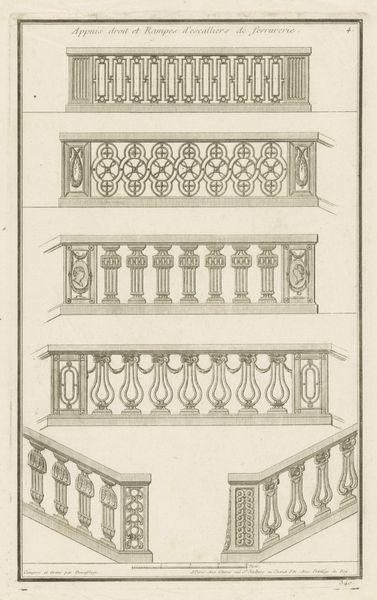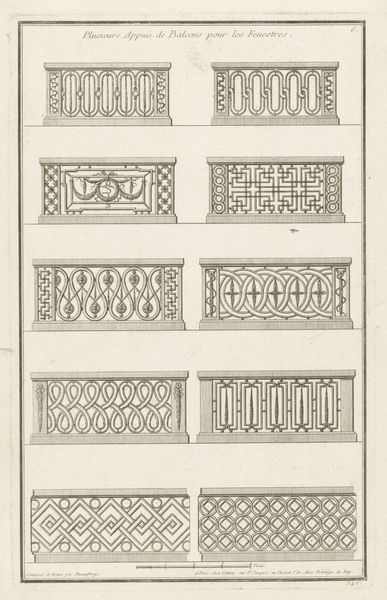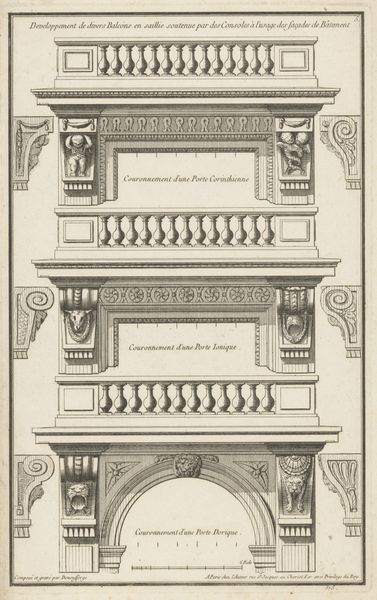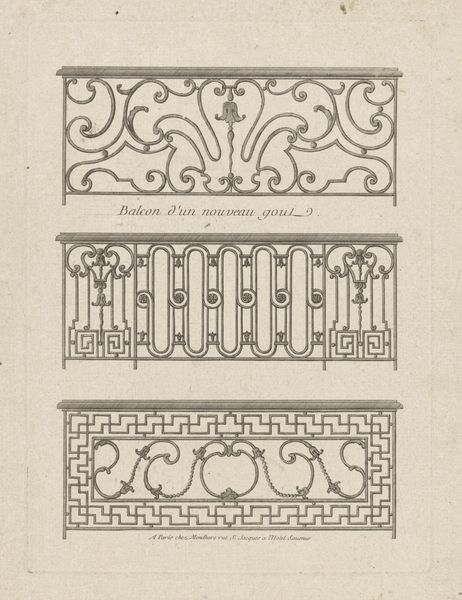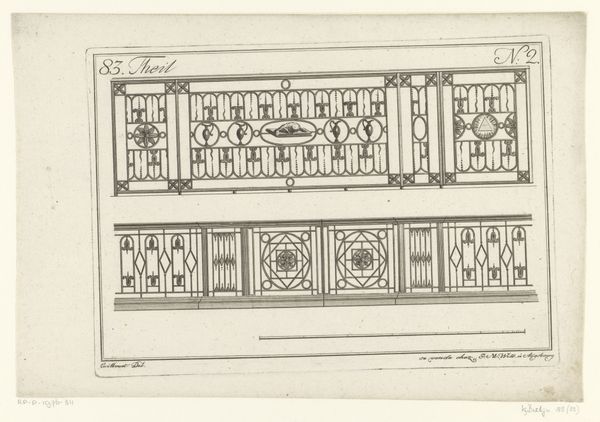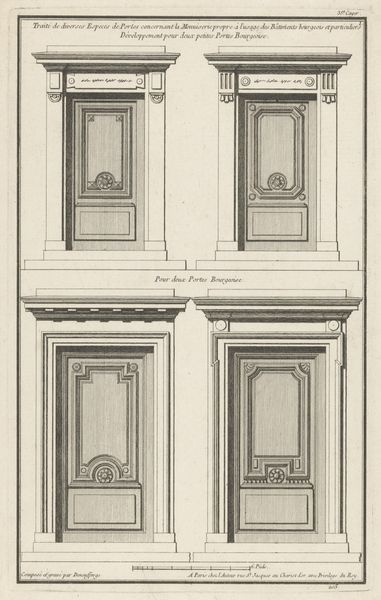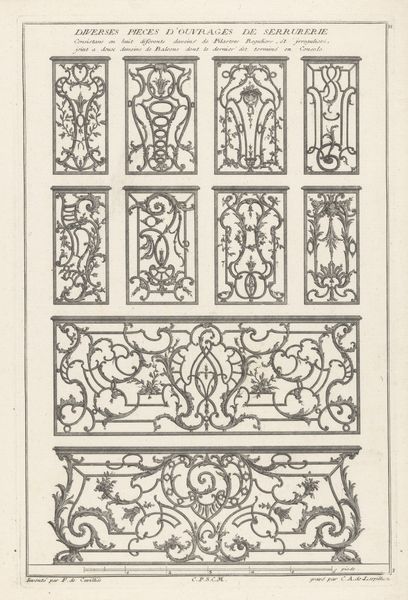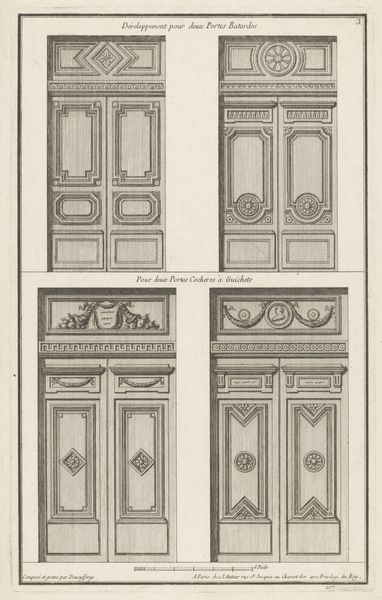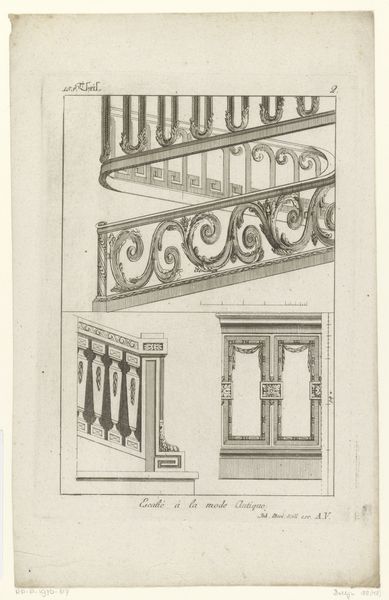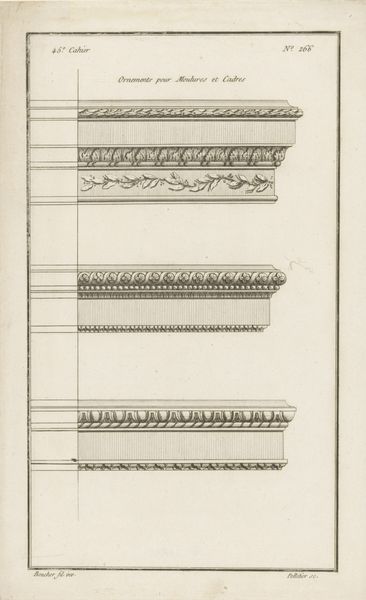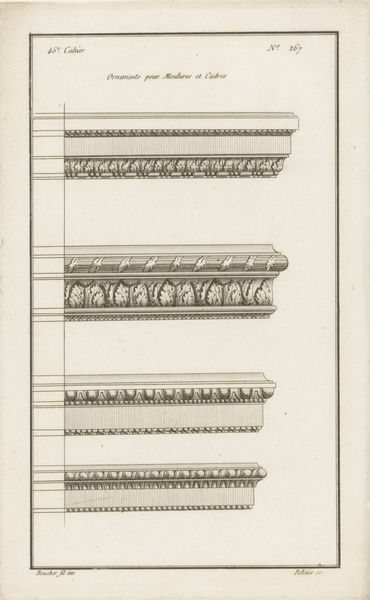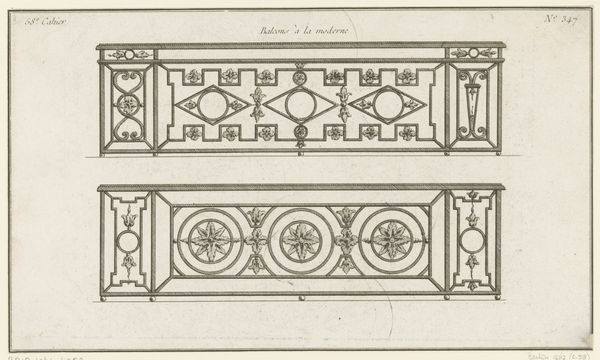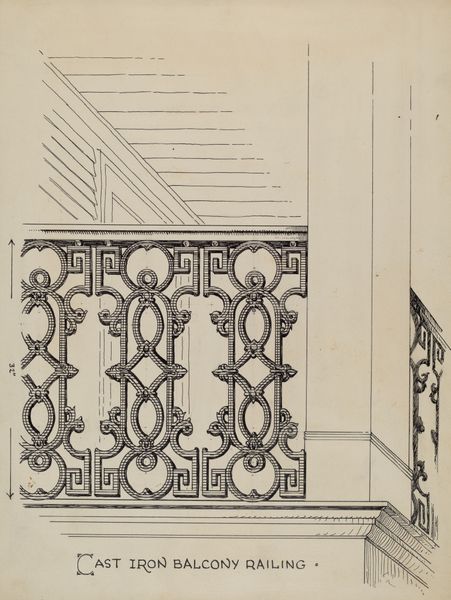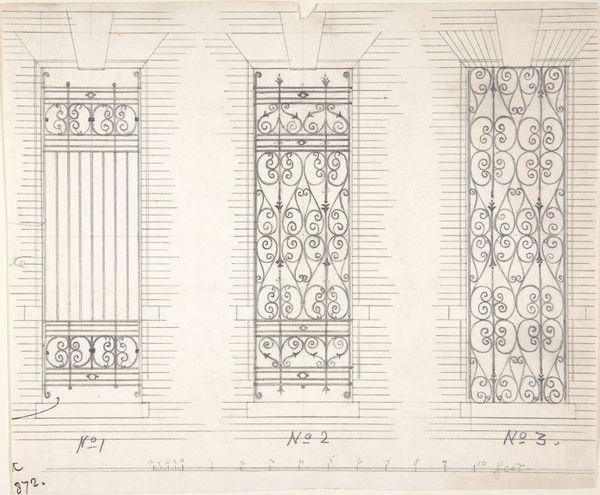
Dimensions: height 360 mm, width 225 mm
Copyright: Rijks Museum: Open Domain
Curator: Looking at this print, “Balkonhekken” by Jean François de Neufforge from 1763, currently held at the Rijksmuseum, I'm struck by the sheer variety of its geometries. It really showcases Baroque design sensibilities. Editor: Immediately, I see order attempting to contain opulence. Each balcony design is intricate, but constrained. There’s almost a tension between the rigid structure of the format and the desire to adorn. Curator: The metal engravings render incredibly complex latticeworks. You have Greek keys, intertwined circles, quatrefoil motifs – all testaments to Neufforge's understanding of architectural embellishment. He treats the balustrade almost like a canvas for ornamental expression. Editor: Note how each design explores distinct moods. Some convey aristocratic authority, some imply domestic refinement, yet others whisper of more playful aesthetics. It's an array of aspirations, reflecting the power that patrons wielded when commissioning work during this era. The bottom design has some interesting portraiture too! Curator: Precisely! Consider the formal language: bilateral symmetry dominates throughout, save for a slight asymmetry found amongst the patterns on level four. That is what anchors it so strongly within classicist traditions popular in the era, particularly evident during Louis XV’s reign. The design elements adhere strongly to proportional systems, imparting visual harmony above mere decorative flair. Editor: Yet beyond visual pleasure lies socio-political context, namely France's expanding merchant class striving toward recognition equal with old aristocracy—ornamental excess provided an eloquent statement. The work stands testament nonetheless beyond aesthetic flourishes into markers highlighting societal flux influencing architecture—specifically balcony arrangements serving outward expressions projecting societal mobility then! Curator: Analyzing such period details elucidates subtle changes influencing contemporary aesthetic choices alongside offering deep context for interpreting architectural conventions characterizing late eighteenth-century artistic traditions overall through architectural decoration seen in such balcony railings! Editor: True, the beauty goes beyond pattern recognition; by dissecting historical motifs intertwined into decorative artwork this becomes a narrative encapsulating societal shifts. And to view artwork specifically intended toward societal infrastructure rather adds new interpretation frameworks besides those available via conventional sculpture display means for its potential audiences beyond existing traditional museums/exhibition models potentially altogether; balconies framing lived encounters!
Comments
No comments
Be the first to comment and join the conversation on the ultimate creative platform.
